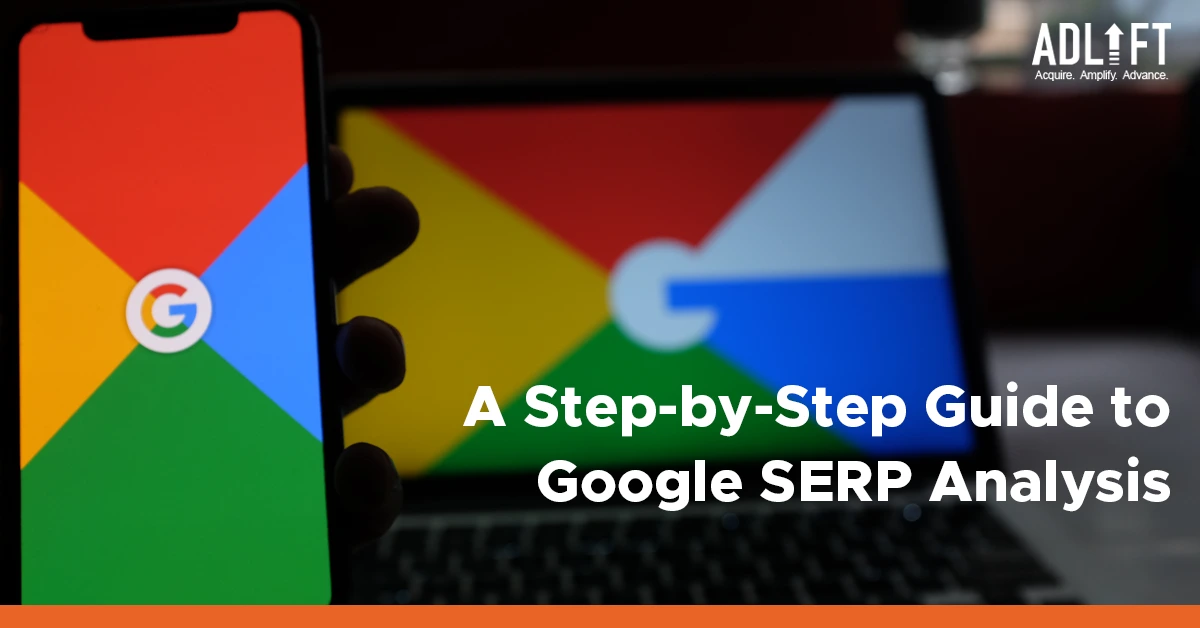A Step-by-Step Guide to Google SERP Analysis

As the owner of a website or an online business, one of the most important things you can do is learn how to do SERP analysis to understand where your site is ranking and how you can improve your position. Google SERP analysis is essential to developing an effective SEO strategy, and in this article, we’ll take a step-by-step approach to help you do just that.
What is Google SERP Analysis?
Before we get started, let’s define what Google SERP analysis is. A SERP is the page that appears when you search for something on Google. When you analyze the SERP, you’re looking at the various elements on the page, including organic search results, paid ads, featured snippets, and more.
The goal of SERP analysis is to understand how Google is displaying information related to your target keyword or topic. By analyzing the SERP, you can identify which elements are most prominent, what type of content is ranking, and what you can do to improve your site’s position.
As the proprietor of an online business or website, it’s crucial to perform a thorough analysis of the search engine results page (SERP) using a SERP analyzer. A SERP analyzer enables you to identify your website’s position and take steps to improve it. A free SERP analysis tool like Google Search Console or SERPChecker can provide valuable insights into your target keyword’s performance. These free SERP analysis tools allow you to track your website’s ranking, analyze your competitors, and discover new opportunities to improve your SEO strategy.
Step 1: Identify Your Target Keyword
The first step in understanding how to do SERP analysis is to identify your target keyword. This is the keyword or phrase you want your website or page to rank for. You can use various keyword research tools to find relevant keywords and phrases, such as Google’s Keyword Planner, Ahrefs, or SEMrush.
Once you have identified your target keyword, search for it on Google. Take note of the search results that appear on the first page, as these are the results that are most likely to drive traffic to your site.
Step 2: Analyze the Organic Search Results
The next step in SERP analysis is to analyze the organic search results. These are the results that appear below the paid ads on the SERP. Look at the content that is ranking for your target keyword, and ask yourself the following questions:
- What type of content is ranking (blog posts, product pages, videos, etc.)?
- How long is the content?
- What topics are covered in the content?
- Are there any common themes or patterns in the content?
By analyzing the organic search results, you can get a better understanding of what type of content Google is favouring for your target keyword. Use this information to inform your own content strategy.
Step 3: Analyze the Paid Ads
Paid ads are another important element of the SERP. Analyzing the paid ads can give you insight into which advertisers are bidding on your target keyword and what types of ads they are running.
Look at the ads that are appearing on the SERP for your target keyword and ask yourself the following questions:
- Who is advertising?
- What types of ads are they running (text ads, shopping ads, etc.)?
- What are their ad copy and call-to-action (CTA)?
By analyzing the paid ads, you can identify potential competitors and get ideas for your own ad campaigns.
Step 4: Analyze the Featured Snippets
Featured snippets are a special type of result that appears at the top of the SERP. These are snippets of content that Google thinks best answers the user’s query. Analyzing featured snippets can give you insight into what type of content Google is favouring for your target keyword.
Look at the featured snippet for your target keyword and ask yourself the following questions:
- What type of content is in the featured snippet?
- What topics are covered in the featured snippet?
- Is the content in the featured snippet similar to the content in the organic search results?
Use this information to inform your own content strategy and potentially target the featured snippet for your target keyword.
Step 5: Analyze the People Also Ask Section
The People Also Ask (PAA) section is a box that appears on the SERP with questions related to the user’s search query. Analyzing this section can give you insight into what questions people are asking about your target keyword and what type of content you can create to answer these questions.
Look at the questions that appear in the PAA section for your target keyword and ask yourself the following questions:
- What are the common themes among the questions?
- What type of content would best answer these questions?
- Are there any gaps in the content currently ranking for the target keyword that you can fill with your content?
By analyzing the PAA section, you can identify opportunities to create content that answers the questions people are asking about your target keyword.
Step 6: Analyze the Related Searches
At the bottom of the SERP, you’ll find a section with related searches. Analyzing these related searches can give you insight into what other topics people are interested in related to your target keyword.
Look at the related searches for your target keyword and ask yourself the following questions:
- What are the common themes among the related searches?
- What type of content would best answer these related searches?
- Are there any opportunities to create content that covers these related searches?
By analyzing the related searches, you can identify additional topics to create content around and expand your content strategy.
Conclusion
Analyzing Google SERP can be a daunting task, but it’s crucial to the success of your website. By understanding your own website’s performance, analyzing your competitors, and developing a strategy, you can improve your search rankings and drive more traffic to your website.
Remember, SEO is an ongoing process, and it takes time to see results. But by staying focused and committed to improving your website’s search rankings, you can achieve long-term success in the search results. Good luck!
FAQs
Ans: SERP analysis refers to examining and evaluating the organic and paid search results displayed by search engines for any specific query. This process involves analysing the web layout, features, and content to understand the user intent better. It is important for SEO because it provides valuable information that can improve the website’s visibility and overall SEO performance. SERP analysis helps in understanding the user intent and provides competitor analysis.
Ans: To access Google SERP data for analysis, you can find various tools. Google Search API is one of the most popular options. This platform allows developers to retrieve search results from Google. You can use this platform to fetch results for specific queries and then analyze that data.
Ans. In the digital marketing sector, there are several tools that can be used for SERP analysis. Some of them include SEMrush, Ahrefs, Moz, Google search console, rank tracker etc. Each tool has its own advantages and disadvantages; you can analyze and pick your preferred tool keeping all these factors in mind.
Ans: Some key elements can provide valuable insights when analyzing SERP data. These elements are:
-
- Organic results
- Featured snippets
- Paid advertisements ‘People also ask’ boxes
- Related searches
- Rich snippets
- Competitor analysis
Ans: To determine the competitiveness of a keyword based on SERP analysis, start by analyzing the top-ranking pages for content quality, domain authority, backlinks and On-page optimization. Assessing these factors can help you determine the keyword competitiveness.
Ans: The different types of search results that can appear on SERP include organic results, featured snippets, paid search results, knowledge graphs, image results etc. These results depend on the query and the search engine’s features.
Ans: A featured snippet, or “Position 0,” is a concise content excerpt that appears at the top of a Google search results page (SERP). It serves as a quick answer resource for users, appearing before the first organic result. Meant to address user queries, it provides a brief and immediate response.
Ans: Organic search results are unpaid results that appear on the search engine result page (SERP). The ranking of these results depends on various factors, including the relevance to the user’s search query, the presence of incoming links, effective search engine optimization (SEO) strategies, and the domain’s authority.

